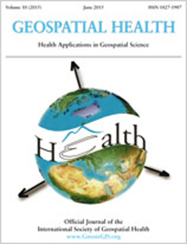The future of general practitioner care in Lower Saxony, Germany: an analysis of actual vs target states using a GIS-based floating catchment area method

All claims expressed in this article are solely those of the authors and do not necessarily represent those of their affiliated organizations, or those of the publisher, the editors and the reviewers. Any product that may be evaluated in this article or claim that may be made by its manufacturer is not guaranteed or endorsed by the publisher.
Authors
Ensuring universal and equitable accessibility to healthcare services is crucial for fostering equal living conditions aligned with global and national objectives. This study examines disparities in accessing General Practitioner (GP) care within Lower Saxony and Bremen, Germany, using the two-step floating catchment area method for spatial analysis at street section level, incorporating various transportation modes. Findings are compared with needs-related planning guidelines to uncover spatial disparities and deviations between prescribed guidelines (target state) and empirical findings (actual state). The analysis reveals significant discrepancies, with over 50% of the population inadequately supplied due to accessibility or capacity issues, particularly in rural and some urban areas, challenging assumptions of sufficient urban healthcare provision. This is the first detailed analysis of primary care provision at this granular level in Lower Saxony, exposing substantial gaps between current GP care and planning targets. Fine-grained spatial analysis proves essential for revealing healthcare accessibility inequities and offers a roadmap for targeted policy interventions. Despite limitations, such as not fully capturing real-world dynamics or patient preferences, the study provides valuable insights into enhancing geographically equitable GP care. It contributes to the discourse on achieving equal living conditions through equitable healthcare accessibility, advocating a more refined, localised approach to healthcare planning, emphasizing the importance of detailed spatial analysis for informed decision-making and promoting health equity.
How to Cite

This work is licensed under a Creative Commons Attribution-NonCommercial 4.0 International License.
PAGEPress has chosen to apply the Creative Commons Attribution NonCommercial 4.0 International License (CC BY-NC 4.0) to all manuscripts to be published.













